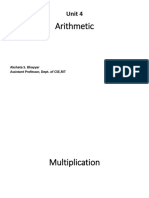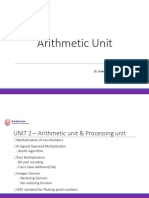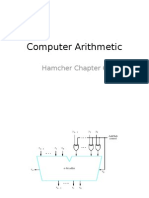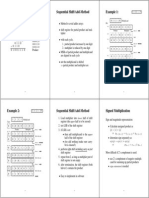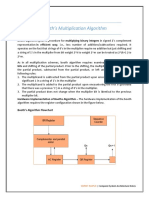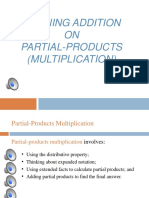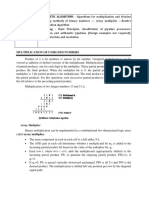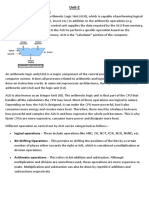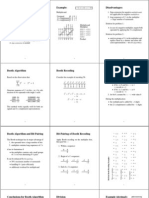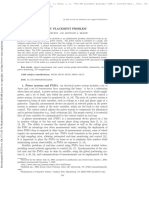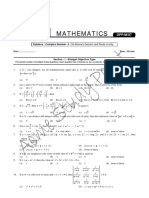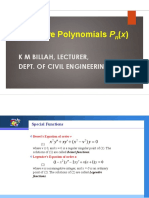0% found this document useful (0 votes)
20 views35 pagesArithmetic
The document discusses the multiplication of unsigned and signed numbers, explaining the process and rules for implementing multiplication, including the use of combinatorial array multipliers and sequential multiplication techniques. It introduces Booth's algorithm for signed multiplication, detailing its operation and efficiency, and presents bit-pair recoding and carry-save addition methods to optimize multiplication. Additionally, it briefly mentions integer division methods, specifically restoring and non-restoring division.
Uploaded by
chidason004Copyright
© © All Rights Reserved
We take content rights seriously. If you suspect this is your content, claim it here.
Available Formats
Download as PDF, TXT or read online on Scribd
0% found this document useful (0 votes)
20 views35 pagesArithmetic
The document discusses the multiplication of unsigned and signed numbers, explaining the process and rules for implementing multiplication, including the use of combinatorial array multipliers and sequential multiplication techniques. It introduces Booth's algorithm for signed multiplication, detailing its operation and efficiency, and presents bit-pair recoding and carry-save addition methods to optimize multiplication. Additionally, it briefly mentions integer division methods, specifically restoring and non-restoring division.
Uploaded by
chidason004Copyright
© © All Rights Reserved
We take content rights seriously. If you suspect this is your content, claim it here.
Available Formats
Download as PDF, TXT or read online on Scribd
/ 35
